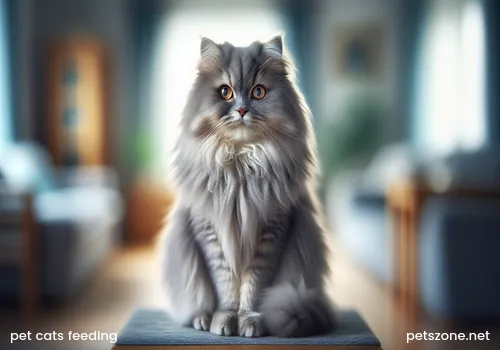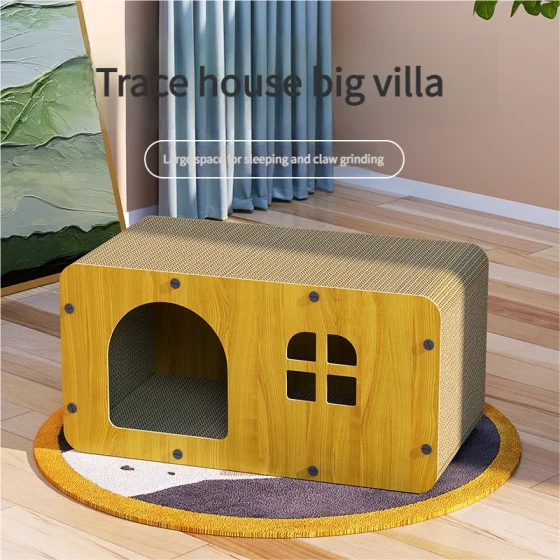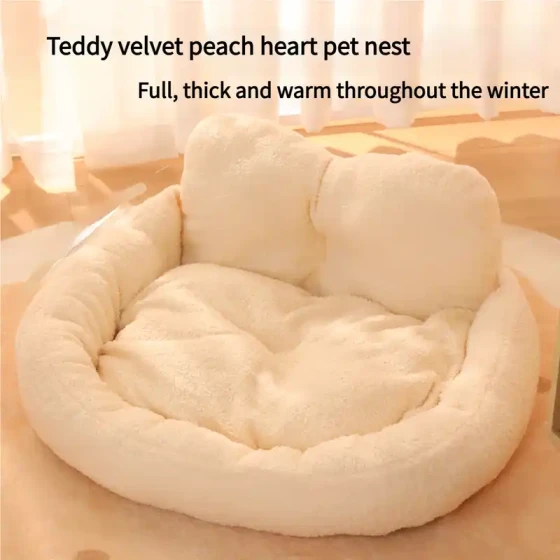Can Pet Cats Eat Homemade Food_Home-raised Cats Dietary Taboos and Scientific Feeding Guide
Can cats be fed homemade food? Simply put, it is not recommended to use the homemade food we eat as the main food for cats. This is because human food usually cannot meet the unique nutritional needs of cats and may even contain harmful ingredients. Long-term feeding can pose potential health risks to cats.

Imagine, cats are like natural "athletes"; they need a high-protein, high-fat diet to maintain body functions and energy consumption. Our human home-cooked meals emphasize grains and balanced nutrition, often including large amounts of salt, sugar, oil, and various seasonings, all of which are excessive or even harmful burdens for cats. Just as you cannot expect an athlete to maintain peak condition by eating only fast food, cats cannot rely solely on homemade meals to obtain all the nutrition they need to thrive.
Cats' Unique Nutritional Needs: They Are Not Miniature Humans
Cats are obligate carnivores whose physiological structure and metabolism differ greatly from humans, which determines their special nutritional requirements.
- High Protein: Cats need much more protein than humans to build and repair body tissues and supply energy. High-quality animal protein is an indispensable part of their diet.
- Specific Amino Acids: Taurine is an amino acid crucial to cats. They cannot synthesize enough taurine on their own and must obtain it from food. Taurine deficiency can lead to severe health problems such as blindness and heart disease. Animal-based foods are the main sources of taurine.
- Fat: Fat is an important energy source for cats and provides essential fatty acids, promoting skin and coat health. However, the type and proportion of fat are also important.
- Vitamins and Minerals: Cats have different demands and absorption methods for certain vitamins (such as vitamins A, D, and B complex) and minerals (such as calcium and phosphorus) compared to humans. For example, cats cannot efficiently convert plant-based beta-carotene into vitamin A and therefore need active vitamin A directly from animal foods.
The foods we cook daily are often unable to precisely meet cats’ needs for protein, specific amino acids, vitamins, and minerals in correct proportions.
"Hidden Killers" in Homemade Food: Dietary Taboos for Cats
Besides nutritional imbalance, many common ingredients in homemade dishes are highly toxic to cats, even in small amounts, potentially causing serious consequences.
- Onion and Garlic: Whether raw, cooked, or in any form (including onion powder or garlic powder), onion and garlic contain sulfides that destroy cats’ red blood cells, causing hemolytic anemia. This is like poisoning your cat and is very dangerous.
- Chocolate: The theobromine in chocolate is toxic to cats and can cause vomiting, diarrhea, arrhythmia, tremors, and even death. The higher the cocoa content, the stronger the toxicity.
- Grapes and Raisins: May induce kidney failure in cats, although the exact cause is unclear; the risk is extremely high.
- Bones: Cooked bones become brittle and can splinter into sharp fragments that may injure or block cats’ digestive tracts, causing internal bleeding or perforation. Chicken bones, fish bones, etc., are especially dangerous.
- Raw Meat and Raw Fish: May contain parasites and bacteria (such as Salmonella, E. coli) that cause digestive problems. Raw fish contains thiaminase, which breaks down vitamin B1 in cats, leading to deficiency.
- Milk and Dairy Products: Most adult cats lack lactase and cannot properly digest lactose in milk; drinking milk can lead to diarrhea, vomiting, and other lactose intolerance symptoms.
- Salt and Sugar: Excess salt burdens cats’ kidneys and heart. Long-term high salt intake may cause hypertension and kidney disease. Excessive sugar can lead to obesity, diabetes, and dental issues.
- Seasonings and Spices: Artificial seasonings, flavorings, MSG, etc., offer no health benefits to cats and may irritate their digestive systems or cause other adverse reactions.
- Raw Dough: Raw dough ferments in a cat’s stomach, producing gas that causes bloating, pain, and even alcohol poisoning.
- Caffeine and Alcohol: Highly toxic to cats, severely affecting their central nervous system and heart function, possibly fatal.
These "taboo foods" are like "landmines" hidden in homemade meals; if cats accidentally ingest them, the consequences can be disastrous.
Scientific Feeding Guide: Provide Cats with Healthy and Delicious "Exclusive Meals"
Since homemade food is inappropriate, how should you feed your cat scientifically?
- Choose Commercial Cat Food:
- High-quality Complete Cat Food: There are various brands and flavors on the market; choose complete cat food that meets AAFCO (Association of American Feed Control Officials) or equivalent standards. Complete cat food is scientifically formulated to provide all nutrients cats require. Select formulas based on your cat’s age (kitten, adult, senior), lifestyle (indoor, active), and special needs (sensitive stomach, hairball issues, etc.).
- Dry Food vs. Wet Food: Dry food is convenient to store and helps clean teeth (to some extent), but has low moisture content. Wet food has high moisture content, helping cats stay hydrated and benefiting urinary tract health; usually, it’s more palatable. A combination of dry and wet food can be fed. Always ensure your cat has access to fresh, clean water, which is crucial for their health.
- Careful Selection of Homemade Cat Meals: If you want to prepare homemade food for your cat, do so under the guidance of a pet nutritionist or veterinarian. Homemade cat meals require precise calculation of nutrient ratios and the addition of vitamin and mineral supplements to ensure balanced nutrition. Homemade cat food without professional knowledge is riskier than regular homemade meals.
- Control Feeding Amount and Frequency: Follow the guidelines on cat food packaging and consider your cat’s weight and activity level to determine the feeding amount. Kittens usually need multiple small meals, fed 3-4 times daily; adult cats can be fed twice daily. Avoid overfeeding to prevent obesity.
- Feed at Fixed Times and Places: Establish regular feeding times to help cats develop good digestion habits.
- Provide Ample Water: Ensure cats always have access to fresh, clean water. Ceramic or stainless steel bowls are preferred; some cats like running water, so consider pet drinking fountains.
- Avoid Frequent Food Changes: Frequent switching of cat food may cause gastrointestinal discomfort. When changing food, mix old and new foods gradually, increasing the new food’s proportion over at least a week.
- Moderate Treats: You may give special cat treats in moderation, but total treats should not exceed 10% of daily caloric intake. Do not use human food as cat treats.
- Regular Veterinary Checkups: Take your cat for regular vet exams. Veterinarians can provide professional dietary advice tailored to your cat’s specific condition.
Frequently Asked Questions
- Q: Can I give my cat a little cooked chicken breast?
A: Small amounts of unseasoned cooked chicken breast as an occasional treat are acceptable but not suitable as a staple food since it does not supply all the nutrition cats need. - Q: Can cats drink milk?
A: Not recommended. Most adult cats are lactose intolerant and drinking milk can cause digestive issues. - Q: What should I do if my cat keeps stealing my food?
A: First, ensure you provide enough cat food that meets your cat’s taste preferences. Also, avoid sharing your food with the cat when eating, and establish clear boundaries. Store human food where cats cannot reach it. - Q: I heard cats need to eat cat grass, is that true?
A: Yes, cat grass (such as wheatgrass, barley grass) helps cats digest and expel hairballs. It can be given in moderation.
Conclusion
In summary, for the long-term health of your cat, do not use homemade food as their staple diet. Choose high-quality complete cat food, follow scientific feeding methods, avoid dietary taboos, and consult a veterinarian regularly to ensure your cat lives a healthy and happy life. Providing them with "customized" nutritious meals is the true way to show your love.


-560x560.webp)
